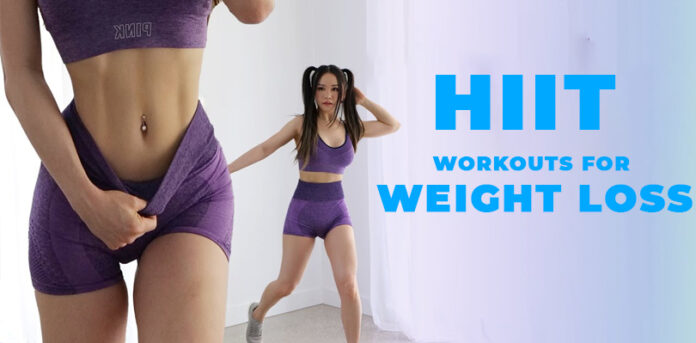If you’re looking for an effective way to lose weight, High-Intensity Interval Training (HIIT) might be just what you need. Unlike traditional cardio exercises, HIIT is a scientifically proven approach that saves time and helps you burn calories, shed pounds, and reach your fitness goals. This article will explore the world of HIIT, discussing its benefits, how to create effective workouts, safety precautions, and the essential link between HIIT and a balanced diet.
Benefits Of HIIT For Weight Loss

- HIIT workouts are intense and result in burning more calories in a shorter amount of time compared to steady-state cardio.
- Unlike other forms of cardio, HIIT helps preserve lean muscle mass, which is necessary for maintaining a healthy metabolism.
- For those with busy schedules, HIIT offers a convenient solution as sessions can be completed in as little as 15-30 minutes.
- HIIT not only aids in weight loss but also improves cardiovascular fitness, making it a well-rounded choice for overall health.
Sample HIIT Workout Routine For Weight Loss
Here’s a beginner-level HIIT workout routine designed to help you kickstart your weight loss journey.
Workout Structure:
- Duration: Approximately 20 minutes (excluding warm-up and cool-down)
- Intervals: 30 seconds of intense exercise followed by 30 seconds of rest
Warm-up (5 minutes)
Start with a dynamic warm-up to prepare your body for the intense workout ahead. Perform each exercise for 30 seconds:
- Jumping Jacks
- Arm Circles
- Leg Swings (front and side)
- Bodyweight Squats
HIIT Workout (15 minutes):
Perform each exercise for 30 seconds at maximum effort, followed by 30 seconds of rest before moving on to the next exercise.
High Knees
- Stand in place and lift your knees as high as possible.
- Pump your arms to match the knee movement.
Push-Ups (Modified or Full)
- For modified push-ups, keep your knees on the ground.
- Lower your chest towards the floor, then push back up.
Mountain Climbers
- Assume a push-up position.
- Alternate bringing your knees towards your chest in a running motion.
Bodyweight Squats
- Stand with your feet shoulder-width apart.
- Lower your hips into a squat, keeping your knees aligned with your toes.
Burpees (Modified)
- Start by stepping back into a plank position.
- Step back up and stand, raising your arms overhead.
Cool-down (5 minutes)
Finish your workout with a cooldown to help your heart rate gradually return to normal and prevent muscle soreness.
Hamstring Stretch
- Sit down with one leg extended.
- Reach towards your toes, feeling a stretch in the back of your leg.
Quad Stretch
- Stand on one leg and grab your opposite ankle, bringing your heel towards your glutes.
Child’s Pose
- Kneel on the ground, sit back on your heels, and stretch your arms forward.
Chest Opener
- Interlace your fingers behind your back and gently lift your arms to open your chest.
Important Tips
- Focus on performing each exercise with proper form to prevent injuries.
- If this routine feels too challenging initially, start with fewer intervals or extend the rest periods.
- Drink water before, during, and after your workout to stay hydrated.
- If you feel pain, dizziness, or extreme discomfort, stop the exercise and rest.
FAQs
Is HIIT appropriate for beginners?
Yes, HIIT can be adjusted for beginners. It is important to start at a comfortable level of intensity and gradually increase as you become more fit. Proper form is always a priority to avoid injuries. If you are new to exercising or have any health concerns, it is advisable to consult a medical professional before beginning a HIIT routine.
How often should I do HIIT to lose weight?
For effective weight loss, aim to do 3 to 4 HIIT sessions per week. This frequency will give your body time to recover while still experiencing the calorie-burning benefits of HIIT. Keep in mind that consistency is more important than intensity, so choose a sustainable routine that fits your schedule.
Can I modify HIIT workouts if I have joint issues?
Definitely. HIIT exercises can be modified to minimize joint impact. For instance, instead of jumping exercises, go for low-impact options like marching in place or stepping. Pick exercises that do not worsen your joint discomfort and gradually increase intensity as your joints can handle it. If you are unsure, seek advice from a fitness professional or physical therapist.

